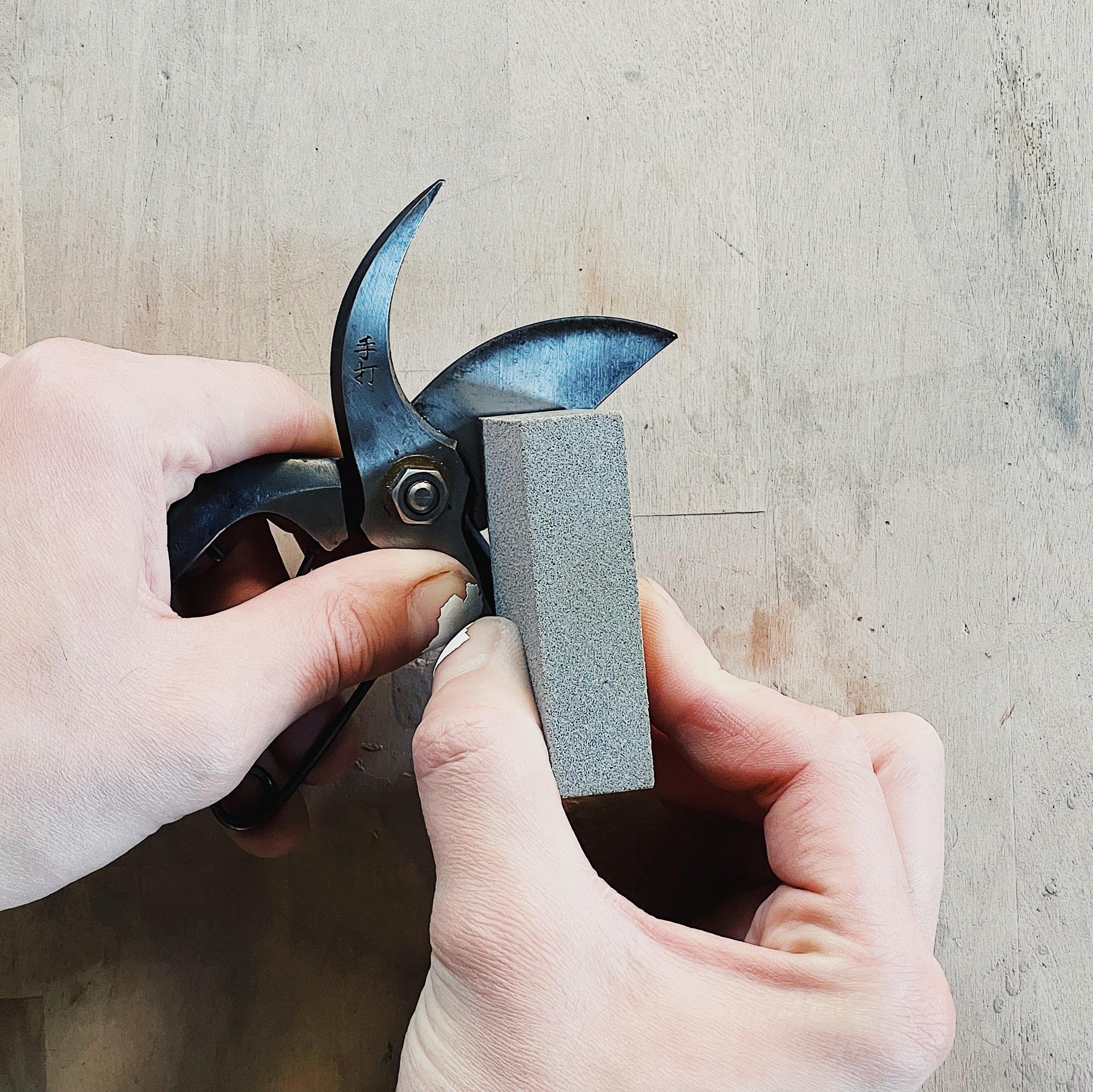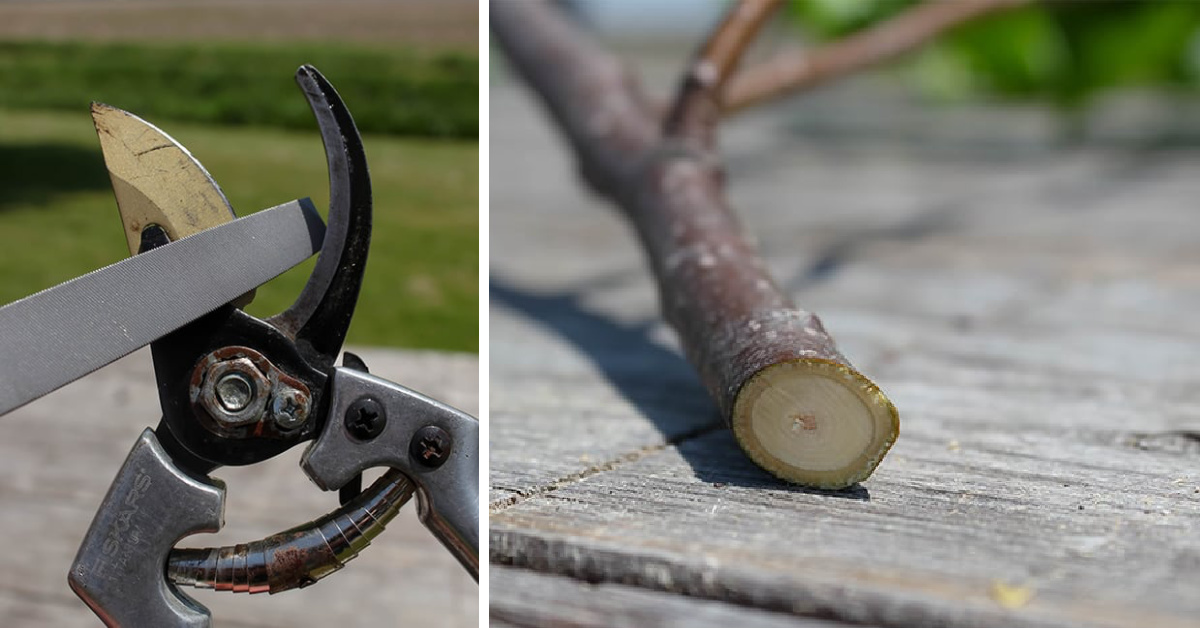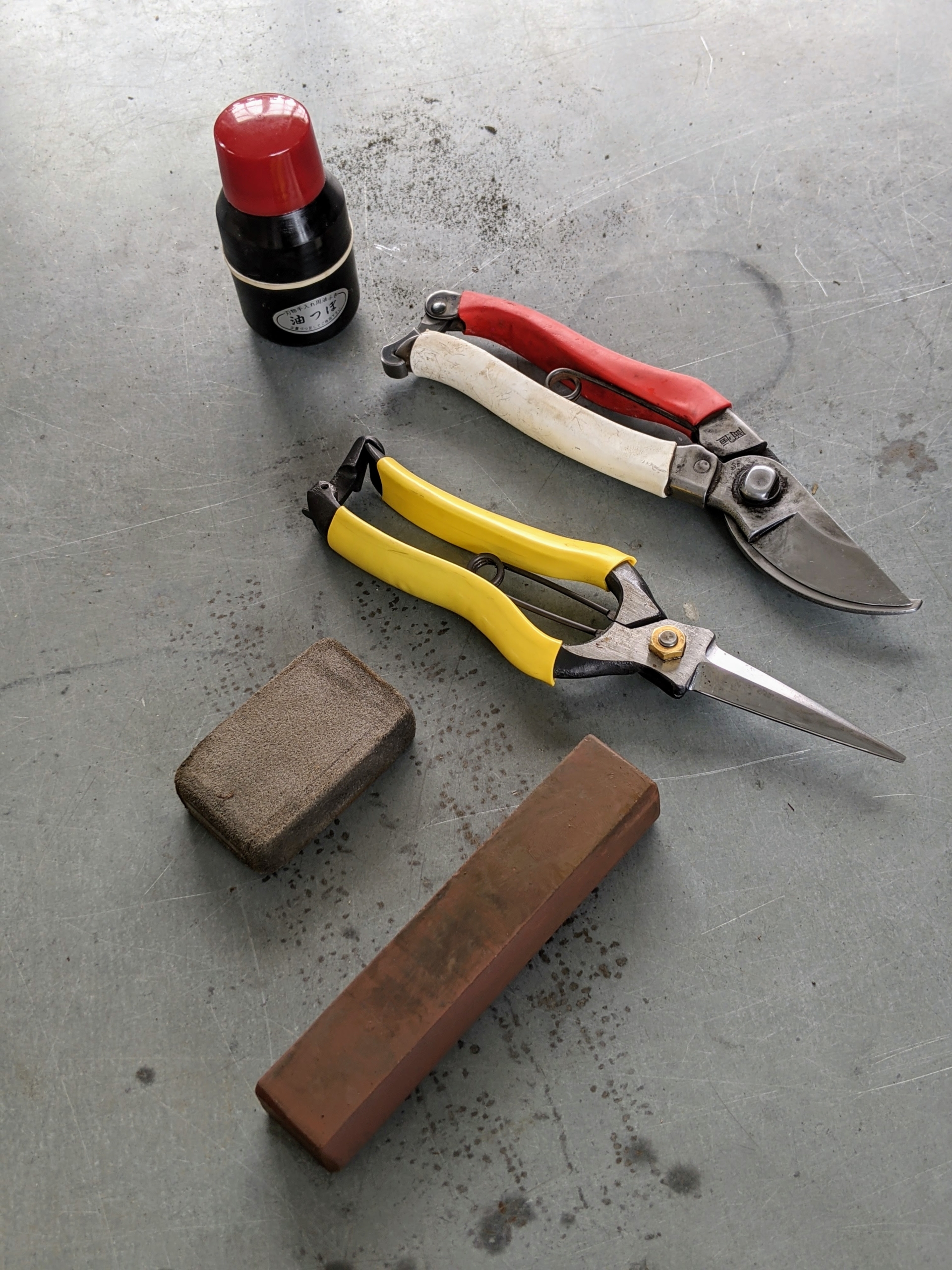As an Amazon Associate, I earn from qualifying purchases.
Maintaining sharp garden shears is crucial for healthy plants. Sharp blades make clean cuts and reduce plant damage.
Garden shears are essential tools for any gardener. Over time, their blades can dull, making them less effective. Dull blades struggle to cut through branches and can harm your plants. To keep your shears in top condition, regular maintenance is key.
This means sharpening the blades, cleaning them, and storing them properly. By taking these simple steps, you can ensure your garden shears stay sharp and ready for use. This not only makes gardening easier but also promotes the health of your plants. Let’s explore the steps to maintain blade sharpness in garden shears.
Importance Of Sharp Blades
Maintaining the sharpness of your garden shears is crucial. Sharp blades ensure clean and precise cuts. Dull blades can damage plants and make your work harder. Keeping them sharp saves time and effort.
Efficient Cutting
Sharp blades lead to efficient cutting. They slice through branches and stems with ease. This reduces strain on your hands and wrists. You can work longer without feeling tired.
- Reduces hand and wrist strain
- Increases cutting efficiency
- Allows for longer working hours
Plant Health
Sharp blades are better for plant health. They make clean cuts that heal quickly. Dull blades can crush and tear stems. This can lead to infections and diseases in plants.
- Clean cuts heal faster
- Prevents plant infections
- Promotes healthy growth
Using sharp blades ensures your plants stay healthy and strong. Keep your garden shears sharp for the best results.

Choosing The Right Shears
Choosing the right garden shears is the first step to maintaining blade sharpness. Picking the correct type and quality ensures durability and ease of use. Let’s explore the key aspects of selecting the perfect shears for your gardening needs.
Types Of Shears
There are different types of garden shears, each suited for specific tasks. Here are the main types:
- Bypass Shears: These shears have two curved blades that pass by each other, like scissors. Ideal for cutting live plants and green wood.
- Anvil Shears: One straight blade cuts against a flat surface (the anvil). Great for dead wood and tough, dry branches.
- Pruning Shears: Small, hand-held shears for precision cuts on flowers and small branches.
- Lopping Shears: Larger shears with long handles for cutting thicker branches and stems.
- Hedge Shears: Designed for trimming and shaping hedges and bushes. They have long blades and handles for extended reach.
Material Quality
The material of the shears determines their longevity and effectiveness. High-quality materials ensure the blades stay sharp longer. Here are some materials to consider:
| Material | Benefits |
|---|---|
| Carbon Steel | Very sharp and durable. Requires regular maintenance to prevent rust. |
| Stainless Steel | Resistant to rust and corrosion. Slightly less sharp than carbon steel. |
| Titanium Coated | Extra durability and sharpness. Resistant to wear and tear. |
Handles also play a crucial role in the quality of shears. Look for these features in handles:
- Ergonomic Design: Reduces hand fatigue and improves comfort.
- Non-Slip Grip: Ensures safety and control during use.
- Lightweight Materials: Aluminum or fiberglass handles reduce overall weight.
Choosing the right shears with high-quality materials will significantly enhance your gardening experience. Proper selection leads to easier maintenance and prolonged blade sharpness.
Regular Cleaning
Regular Cleaning is essential for maintaining the blade sharpness in garden shears. Clean tools work better and last longer. Regular cleaning helps prevent rust and removes sap and debris, ensuring smooth and efficient cutting. Follow these steps to keep your garden shears in top condition.
Removing Debris
First, remove any visible debris from the blades. Use a stiff brush or a cloth. Pay special attention to areas where sap or dirt might accumulate. Stuck debris can cause the blades to dull faster.
Using Cleaning Solutions
After removing the debris, apply a cleaning solution. A mix of water and mild soap works well. For tougher grime, use a stronger solution like rubbing alcohol or vinegar. Be sure to wipe the blades thoroughly, removing all residue. This step helps prevent rust and keeps the blades in good condition.
| Solution | Use |
|---|---|
| Water and Mild Soap | General cleaning |
| Rubbing Alcohol | Removing sap and sticky residue |
| Vinegar | Disinfecting and rust prevention |
- Brush off visible debris.
- Apply cleaning solution.
- Wipe blades thoroughly.
- Inspect the blades for debris.
- Use a brush or cloth to remove dirt.
- Mix water with mild soap in a bowl.
- Dip a cloth in the solution.
- Wipe the blades with the damp cloth.
- For stubborn grime, use rubbing alcohol.
- Dry the blades with a clean cloth.
Regular cleaning prevents rust and keeps blades sharp. Removing debris ensures smooth cutting. Using cleaning solutions helps maintain blade condition.
Following these simple steps will ensure your garden shears remain sharp and effective for a long time. Happy gardening!
Proper Storage
Proper storage of garden shears is essential to maintain their blade sharpness. Storing them correctly prevents rust and damage. It also ensures they are ready for use whenever needed. Let’s explore some effective storage practices.
Drying Blades
Always dry the blades after using garden shears. Moisture can cause rust, dulling the blades over time. Use a clean cloth to wipe the blades thoroughly. Ensure no water remains on the surface. This simple step helps in preserving their sharpness.
Safe Storage Tips
Store garden shears in a dry, cool place. Avoid areas with high humidity or direct sunlight. High humidity can lead to rust, while sunlight can weaken the metal. Use a sheath or blade cover for added protection. This prevents accidental cuts and keeps the blades safe from damage.
Hanging shears on a pegboard or wall hook is another good practice. This keeps them off the ground and reduces the risk of damage. Ensure they are stored out of reach of children for safety.
Lubrication
Maintaining the sharpness of garden shears is vital for their performance. One crucial step is lubrication. Proper lubrication reduces friction, prevents rust, and ensures smooth operation. Regular lubrication helps keep your shears in top condition. Let’s explore the different types of lubricants and the best application techniques.
Types Of Lubricants
Various lubricants can be used for garden shears. Each type offers unique benefits. Here are some common options:
Mineral Oil: This is a popular choice. It prevents rust and reduces wear.
Silicone Spray: Silicone spray is ideal for repelling dirt and moisture.
WD-40: This versatile product lubricates and protects against corrosion.
Choose the lubricant that suits your needs. Always read the manufacturer’s instructions before use.
Application Techniques
Proper application ensures the lubricant works effectively. Here’s a simple guide:
Clean First: Remove any dirt or debris from the blades. This ensures the lubricant can penetrate effectively.
Apply Sparingly: Use a small amount of lubricant. Excess can attract dirt.
Spread Evenly: Use a cloth or brush to spread the lubricant. Cover all moving parts and blades.
Wipe Off Excess: Remove any excess lubricant with a clean cloth. This prevents the buildup of grime.
Regular lubrication, combined with proper application, keeps your garden shears working smoothly. Follow these steps to maintain their sharpness and longevity.
Sharpening Techniques
Maintaining the sharpness of garden shears is crucial for clean and precise cuts. Regular sharpening keeps your shears efficient and prolongs their lifespan. Below, we will explore two effective sharpening techniques: using a sharpening stone and using a file.
Using A Sharpening Stone
A sharpening stone, also known as a whetstone, is a common tool for sharpening garden shears. Follow these steps to sharpen your shears with a sharpening stone:
- Disassemble the shears to separate the blades.
- Soak the sharpening stone in water for 5-10 minutes.
- Hold the blade at a 10-15 degree angle to the stone.
- Move the blade in a smooth, consistent motion across the stone.
- Repeat the process for the other blade.
- Reassemble the shears and test their sharpness on a piece of paper.
Ensure you sharpen both sides of each blade evenly. This prevents uneven wear and maintains balance.
Using A File
A file is another useful tool for sharpening garden shears. Here is how you can use a file:
- Disassemble the shears to separate the blades.
- Secure one blade in a vice to keep it steady.
- Hold the file at a 10-15 degree angle to the blade.
- Push the file away from you in one direction, along the blade’s edge.
- Repeat the process until the blade is sharp.
- Follow the same steps for the other blade.
- Reassemble the shears and test their sharpness.
Files come in different sizes and grits. Choose a file that matches the size of your shears for the best results.
Both methods require patience and practice. Regular sharpening keeps your garden shears in top condition.
Preventing Rust
Garden shears are essential tools for maintaining a beautiful garden. Keeping them rust-free ensures their longevity and performance. Rust can damage the blades, making them dull and less effective. Preventing rust involves a few simple steps that can make a big difference.
Rust-resistant Coatings
Applying a rust-resistant coating can protect your garden shears from moisture. Many shears come with a factory-applied coating, but it wears off over time. Reapply the coating regularly to keep the blades protected. Use a product specifically designed for metal tools. Spray or brush it on the blades and let it dry completely. This creates a barrier against moisture, reducing the chance of rust.
Regular Maintenance
Clean your garden shears after each use. Wipe off any plant sap, dirt, or debris with a damp cloth. Dry the blades thoroughly to remove any moisture. Store the shears in a dry place to prevent rust formation. Check the blades for rust spots regularly. If you find any, remove them immediately with steel wool or a wire brush. This prevents the rust from spreading and causing more damage.
Sharpen the blades regularly to maintain their cutting efficiency. Use a sharpening stone or file to keep the edges sharp. A sharp blade cuts better and is less prone to rust. Oil the pivot points to keep them moving smoothly. Use a light machine oil for this purpose. This reduces friction and prevents rust from forming in the joints.

Safety Precautions
Maintaining the sharpness of garden shears is essential for their performance. But, safety should always be a priority. Below are some key safety precautions to follow while working on your garden shears.
Wearing Gloves
Always wear protective gloves when maintaining your garden shears. Gloves provide a layer of protection against cuts and nicks. Here are the reasons why:
- Prevent cuts: The sharp edges can easily cut your skin.
- Better grip: Gloves offer a better grip, preventing accidents.
- Comfort: Wearing gloves makes the work more comfortable.
Select gloves that fit well and are made from durable material.
Safe Handling
Handling garden shears safely is crucial. Follow these steps to ensure safety:
- Keep them closed: Always keep the shears closed when not in use.
- Store safely: Store in a secure place, away from children’s reach.
- Use both hands: Hold the shears with both hands while working.
By following these steps, you can avoid accidents and ensure your safety.

Frequently Asked Questions
How Often Should I Sharpen My Garden Shears?
Sharpen your garden shears every 4-6 weeks. This keeps them effective and easy to use.
What Tools Are Needed To Sharpen Garden Shears?
You need a sharpening stone, a file, and some oil. These are essential for sharp blades.
Can I Use Household Items To Sharpen Garden Shears?
Yes, you can use a kitchen knife sharpener or sandpaper. They work in a pinch.
How Do I Clean Garden Shears Before Sharpening?
Wipe the blades with a damp cloth. Remove dirt and sap for better sharpening results.
Why Is It Important To Maintain Blade Sharpness?
Sharp blades make cleaner cuts. They also reduce plant damage and make gardening easier.
Conclusion
Keeping garden shears sharp is essential. Regular maintenance ensures they work efficiently. Clean the blades after each use. Remove any dirt or sap. Sharpen the blades regularly to keep them effective. Use the right tools for sharpening. Store the shears properly to avoid damage.
Consistent care extends their lifespan. Your garden will thank you for it. With sharp shears, gardening becomes easier and more enjoyable. Happy gardening!

